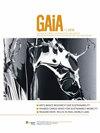Conflicting sociotechnical imaginaries of the future built environment: An analysis of current discourses on timber construction in France and Germany
IF 1.9
4区 社会学
Q4 ENVIRONMENTAL SCIENCES
引用次数: 0
Abstract
Building with timber promises many things at the same time: sustainability, economic efficiency, as well as innovative forms and building processes. However, it is disputable to what extent, and under which conditions, timber construction can be considered sustainable. The societal discourse in Germany and France is shaped by four competing visions that favor either 1. a positive CO2 balance, 2. a particularly time- and cost-efficient construction process, 3. the use of regional resources, or 4. the creation of uniquely designed buildings as the guiding principle of future timber construction.The construction industry is one of the biggest sources of greenhouse gas emissions. In view of resource scarcity, climate change, and rapid global population growth, the industry faces the urgent challenge of a sustainable transition. The renaissance of timber as a renewable, carbon-neutral construction material could pave the way for more sustainable modes of building. Taking France and Germany as examples, and based on a sociological discourse analysis, this paper reveals four different and conflicting sociotechnical imaginaries of the future built environment. The four imaginaries show specific characteristics depending on the respective national, political, and cultural contexts. Moreover, they include partially incompatible objectives and compete for discursive hegemony, and thus implementation. Scrutinizing the four competing visions and their approach to conflicts and scarcities raises profound questions about their political, technological, ecological, and social implications.未来建筑环境的冲突社会技术想象:法国和德国木结构建筑的当前话语分析
用木材建造建筑同时承诺了许多事情:可持续性、经济效率,以及创新的形式和建筑工艺。然而,木材建筑在多大程度上以及在何种条件下可以被认为是可持续的,这是有争议的。德国和法国的社会话语是由四种相互竞争的愿景形成的,这两种愿景都有利于1。正CO2平衡,2。一个特别节省时间和成本的施工过程,3。区域资源的使用,或4。创造独特设计的建筑,作为未来木材建筑的指导原则。建筑业是温室气体排放的最大来源之一。鉴于资源稀缺、气候变化和全球人口快速增长,该行业面临着可持续转型的紧迫挑战。木材作为一种可再生的碳中和的建筑材料的复兴可能为更可持续的建筑模式铺平道路。本文以法国和德国为例,基于社会学话语分析,揭示了对未来建筑环境的四种不同且相互冲突的社会技术想象。这四种想象根据各自的国家、政治和文化背景呈现出特定的特征。此外,它们包括部分不兼容的目标,并争夺话语霸权,从而实施。仔细研究这四种相互竞争的愿景及其对冲突和稀缺性的处理方式,会对其政治、技术、生态和社会影响提出深刻的问题。
本文章由计算机程序翻译,如有差异,请以英文原文为准。
求助全文
约1分钟内获得全文
求助全文
来源期刊

Gaia-Ecological Perspectives for Science and Society
ENVIRONMENTAL SCIENCES-
CiteScore
2.30
自引率
18.80%
发文量
43
审稿时长
>12 weeks
期刊介绍:
GAIA is a peer-reviewed inter- and transdisciplinary journal for scientists and other interested parties concerned with the causes and analyses of environmental and sustainability problems and their solutions.
Environmental problems cannot be solved by one academic discipline. The complex natures of these problems require cooperation across disciplinary boundaries. Since 1991, GAIA has offered a well-balanced and practice-oriented forum for transdisciplinary research. GAIA offers first-hand information on state of the art environmental research and on current solutions to environmental problems. Well-known editors, advisors, and authors work to ensure the high quality of the contributions found in GAIA and a unique transdisciplinary dialogue – in a comprehensible style.
 求助内容:
求助内容: 应助结果提醒方式:
应助结果提醒方式:


